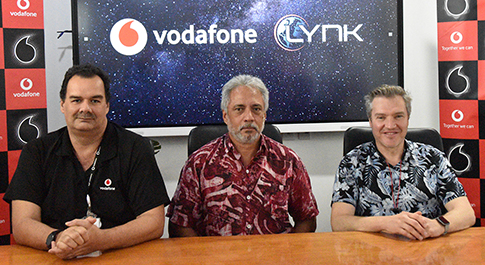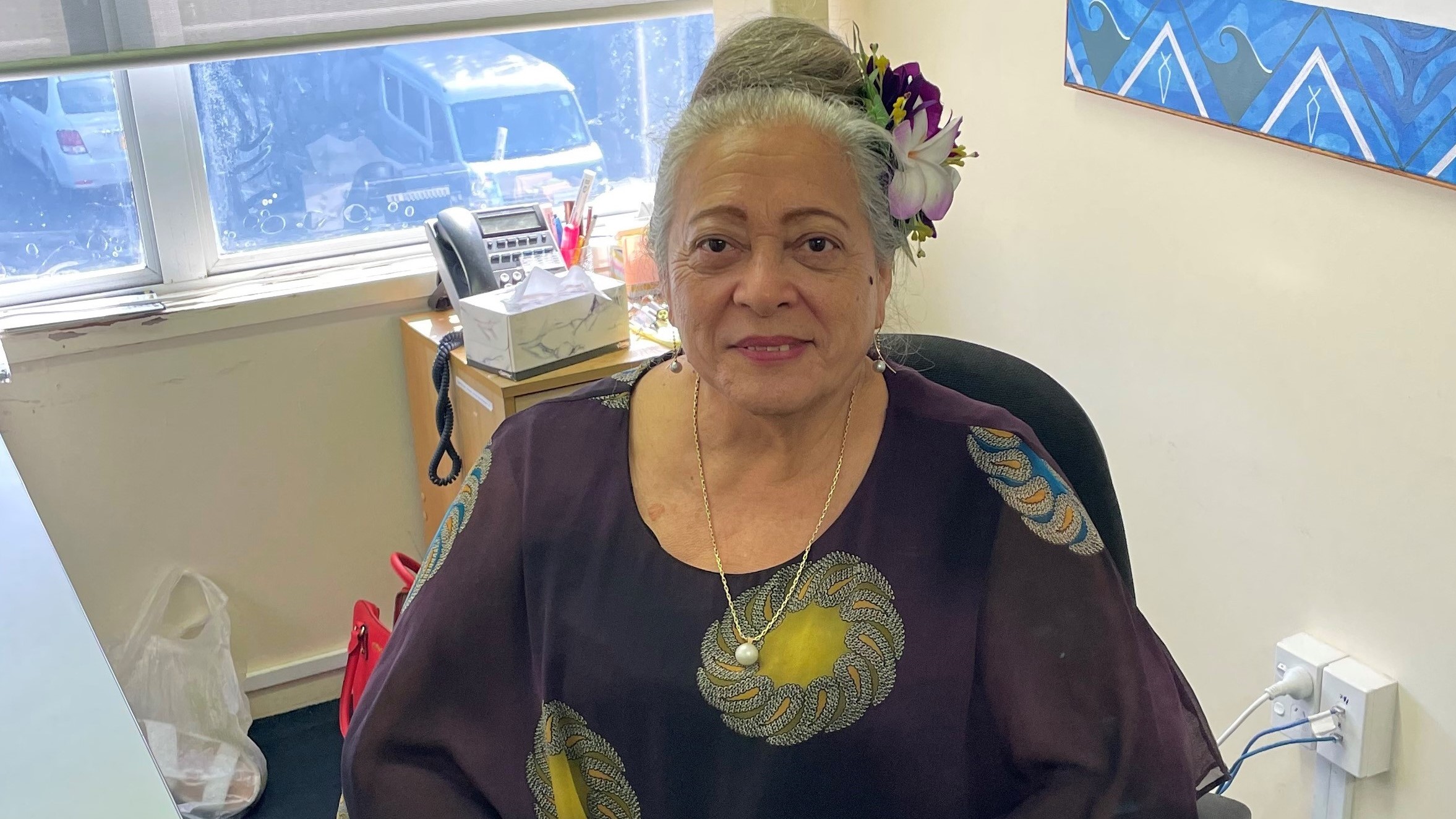Mobile-to-satellite service to offer connectivity to ocean travellers
Friday 11 August 2023 | Written by Melina Etches | Published in National, Technology

Vodafone Cook Islands’ Robert McFadzien (left) with Vodafone CEO Phillip Henderson, and James Alderdice from Lynk Global Inc, Australia. MELINA ETHCHES/23080716
In a ground-breaking collaboration, Vodafone Cook Islands and Lynk Global, Inc. (Lynk) have joined forces to introduce an unprecedented mobile-to-satellite service that offers ‘seamless connectivity’ to users out in the ocean.
Vodafone Cook Islands is the second mobile network operator (MNO) in the world to launch Lynk’s Sat2Phone technology as a subscriber service using its “cell-towers-in-space”.
The initial Sat2Phone service will start as a beta service in an area called “Manuae Route” between Aitutaki and Manuae, and extend over time.
The mobile-to-satellite service empowers ocean travellers and fishers to access, starting with SMS (Short Message Service) messages whilst beyond the reach to traditional terrestrial networks.
This innovative solution will enable individuals to stay connected via their mobile phones, even in remote maritime locations like Manuae, marking a significant leap forward in global telecommunications for the country.
Vodafone CEO Phillip Henderson was thrilled to announce the new partnership with Lynk, on Monday.
“It’s another feature where our population who are travelling the seas in the Cooks will be able to remain connected as service improves,” Henderson said.
“The Cook Islands is characterised by a lot of ocean and very small scattered islands, and it comes with unique challenges and we are always looking at innovative technology to improve connectivity to remote islands.
“There is mobile coverage of the islands but the ocean is sparse and huge, and to invest in technology for us would be impossible. It also enables us to take advantage of it… over the ocean where we don’t have terrestrial coverage our subscribers will be able to roam on the network which is basically a cell phone in space.”
Since Vodafone has very good terrestrial coverage from its own mobile network, Henderson noted that the focus is on covering the blue water.
“The unique thing about it is, it covers the ocean what other roaming data don’t do.”
Lynk vice president in Asia-Pacific, James Alderdice said: “It’s an incredibly exciting moment because the number of lives that eventually will be saved by the service, and building in additional economic prosperity to people who spend perhaps a lot of their day being disconnected, it will be remarkable for them.”
“Today is the first step in extending the coverage across the 2 million kilometres of territory of the Cook Islands. The first step in the journey that will put coverage in one part of the islands and early next year we’ll be able to send that coverage across the whole of the territory and people will get used to using their phones wherever they are.”
Subscribers can use their existing phone “a seamless opportunity to have more connectivity”, he said.
“It’s very significant from an economic prosperity and safety of citizens point of view,” said Alderdice, who is looking forward to working with the service roll out.
The roaming service will initially start as an SMS service, he said, adding “the function is really to keep in touch, letting people know how you’re going, where you are when you’re in a tough area, and later will grow to voice and data”.
“Vodafone Cook Islands has been one of the most innovative operators to work with in terms of being progressive, reaching out and doing this as one of the first in the world,” said Alderdice.
Vodafone Cook Islands’ chief technology officer, Robert McFadzien, said the cell tower in space will be beaming over the part of the ocean between Aitutaki and Manuae, as quite a few fishermen travel between these islands.
McFadzien said that when boats leave Aitutaki, they will lose service 6-10 miles out from the existing service area. Beyond that, they can pick up service from the space-based cell tower.
There will be 2G SMS coverage on Manuae for part of the day, and the schedule will be shared with the Aitutaki Fishing Club, who visit Manuae most often.
“At the moment the coverage is not continuous but the coverage will get better over time when more satellites are launched,” McFadzien said.
“Should there be a disaster that causes the terrestrial mobile network outage for all the phones in the country, this technology will ensure connectivity and enhanced safety.”



















































